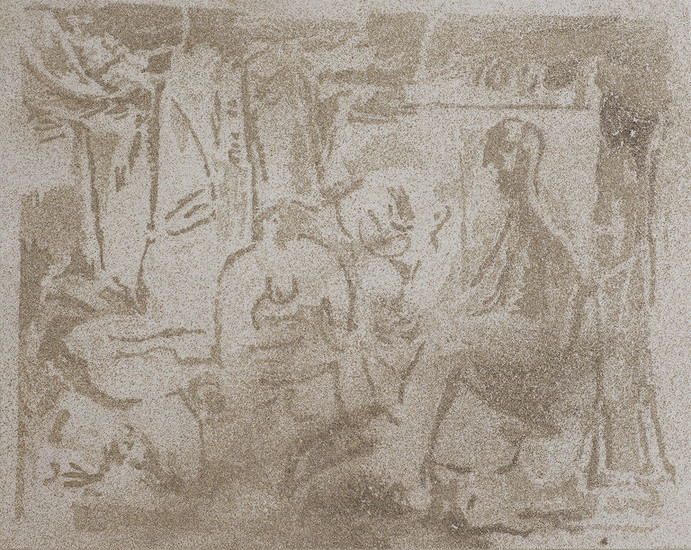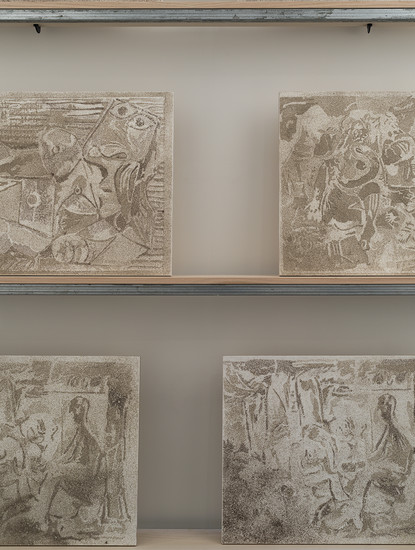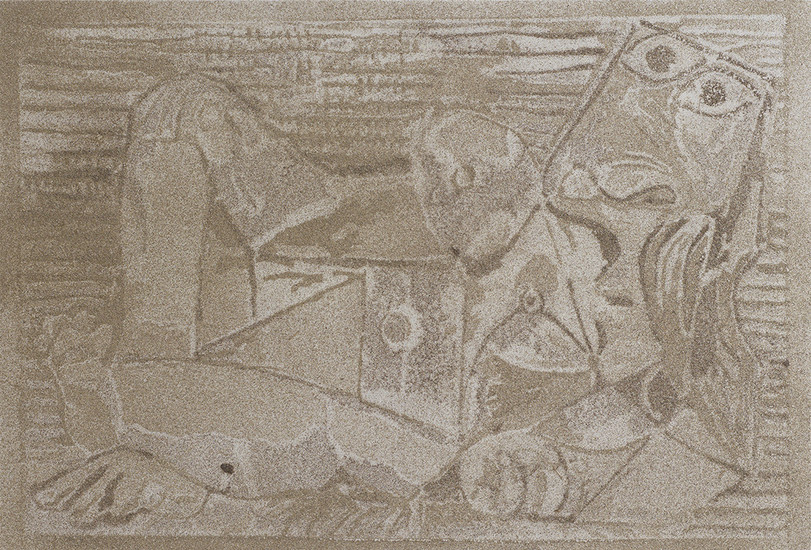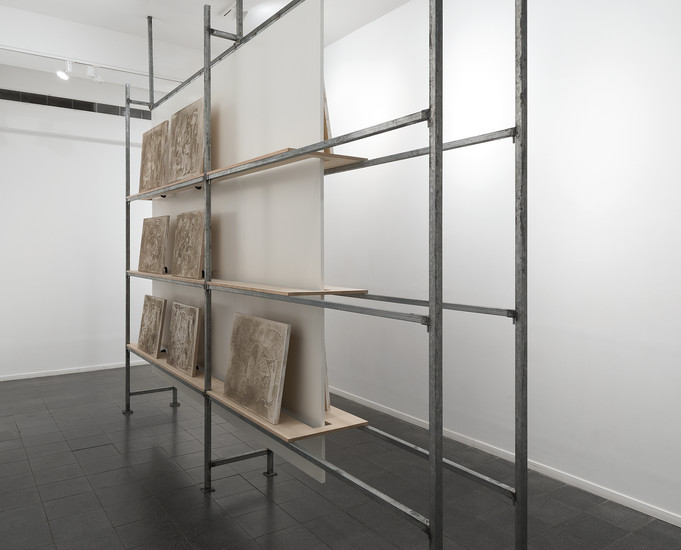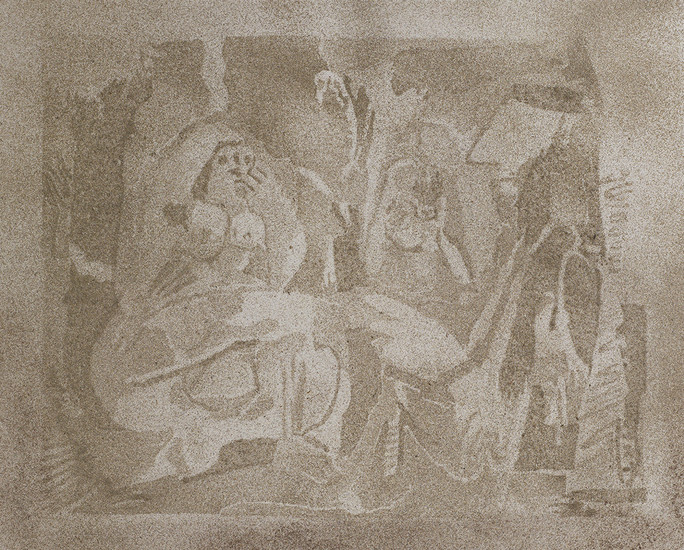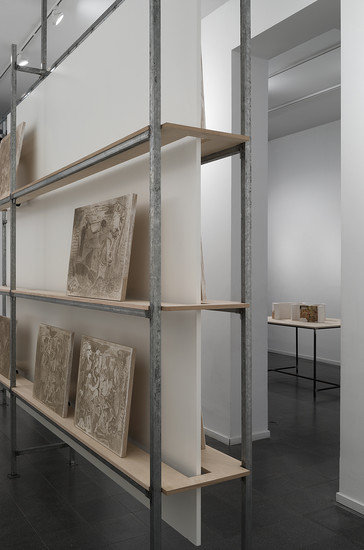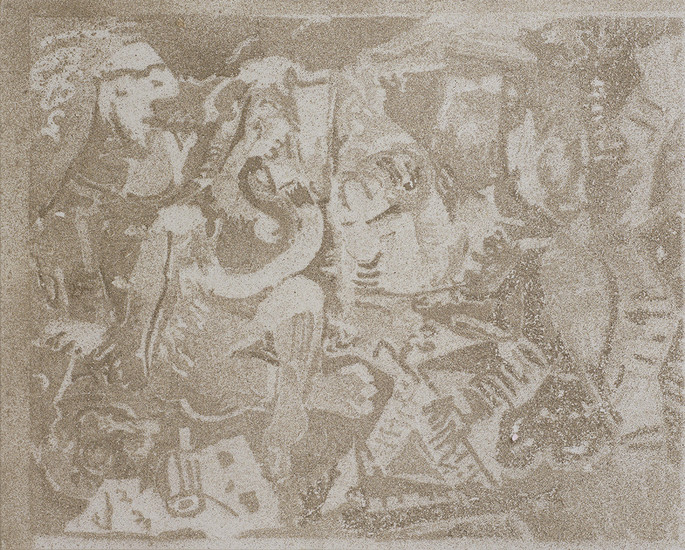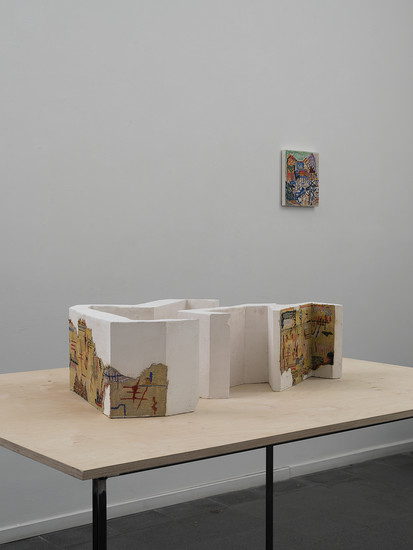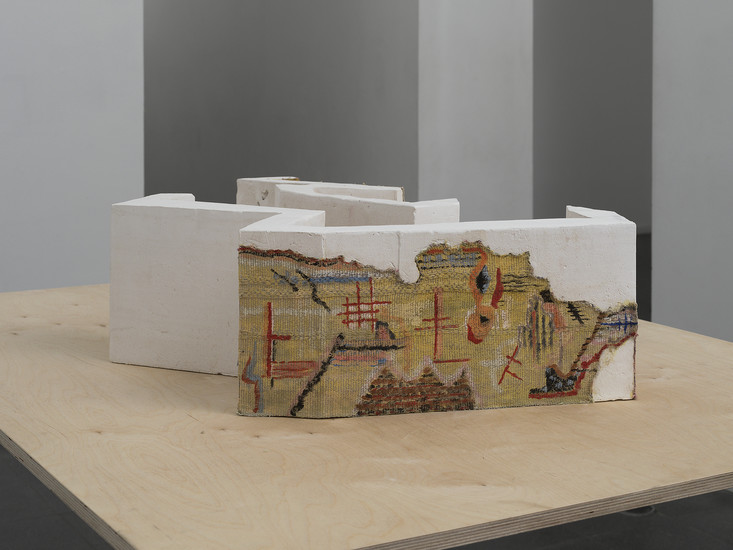Picnic
Irit Hemmo
Picnic
Irit Hemmo
Irit Hemmo’s new exhibition shifts the discursive context of her dust paintings; instead of relating them to the historical tradition of wall paintings in Israel they are tied into a sculptural discussion of painting.
Hemmo physically and conceptually departs from the gallery’s white walls by constructing a system of architectural modular elements in its center, which strongly echoes Mondrian’s grids. This architecture substitutes the walls as a base for a new series of dust paintings, most of which are mise-en-scènes set in a natural environment and inspired by Picasso’s picnic scenes. The paintings lean on both sides of the structure’s high wall, and there is no hierarchical significance to where they are placed upon it. The modular display allows for dynamic play with the painterly composition as a whole. A painting could be added, removed, or moved at any moment, extracting new meaning from the overall compositional syntax.
In the adjacent space, next to another painting by Hemmo, is an object she made together with the artist Drora Domini. The friendship and artistic dialog between the two women is expressed, for the first time, in a collaborative artwork, which ties painting and sculpture to each other symbiotically. It raises questions on the status of a sculptural object as a miniature architectural model, as opposed to a miniature model of a wall with a painting hung on it. Which one is holding the other: is the wall a support for the painting or is it the other way around?
The undecided state of painting, as expressed in Hemmo’s dust paintings, is also present in the two artists’ collaborative piece. It is destabilized, on the one hand, by its scale (is it an object, a model for a sculpture, or a tiny mock-up for an actual structure) and on the other hand by the perspective it dictates (whether it is viewed from above or from the side).

